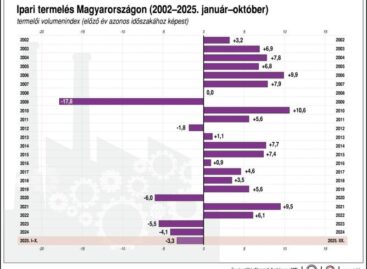In August, the rate of increase in consumer prices slowed down in the euro area
In August, the rate of increase in the consumer price index slowed down in the euro zone to the extent expected by analysts, based on the preliminary estimate presented by Eurostat, the statistical office of the European Union, on Friday.

The annual inflation rate of the Eurozone decreased to 2.2 percent in August from 2.6 percent in July, based on the harmonized consumer price index (HICP) calculated for EU comparison purposes.
Energy prices fell by 3 percent compared to last August, after a 1.2 percent annual increase in July. The annual price increase of services in August was the highest, 4.2 percent, after 4 percent in July. The price increase of food, alcohol and tobacco products accelerated from 2.3 percent in July to 2.4 percent, while the price increase of non-energy industrial products slowed to 0.4 percent in August from the previous month’s annual 0.7 percent.
Excluding energy and food prices (core inflation) it was 2.8 percent in August after 2.9 percent in July.
Among the largest eurozone member states, inflation in Germany was 2 percent in August after 2.6 percent in July, in France consumer price inflation rose from 2.7 percent in July to 2.2 percent, in Italy from 1.6 percent to 1.3 percent, and in Spain to 2.9 percent to 2.4 percent in August.
Related news
KSH: industrial production decreased by 2.7 percent in October compared to the same period of the previous year, and increased by 0.5 percent compared to the previous month
🎧 Hallgasd a cikket: Lejátszás Szünet Folytatás Leállítás Nyelv: Auto…
Read more >The price of slaughter pigs has decreased in Hungary and in the EU
🎧 Hallgasd a cikket: Lejátszás Szünet Folytatás Leállítás Nyelv: Auto…
Read more >EU egg imports increased by one and a half times
🎧 Hallgasd a cikket: Lejátszás Szünet Folytatás Leállítás Nyelv: Auto…
Read more >Related news
Challenges of the retail sector: retail has become more crisis-resistant
🎧 Hallgasd a cikket: Lejátszás Szünet Folytatás Leállítás Nyelv: Auto…
Read more >NGM: conscious shopping for peaceful holidays, consumer protection advice for the Christmas period
🎧 Hallgasd a cikket: Lejátszás Szünet Folytatás Leállítás Nyelv: Auto…
Read more >How to avoid the hassles of online shopping?
🎧 Hallgasd a cikket: Lejátszás Szünet Folytatás Leállítás Nyelv: Auto…
Read more >






